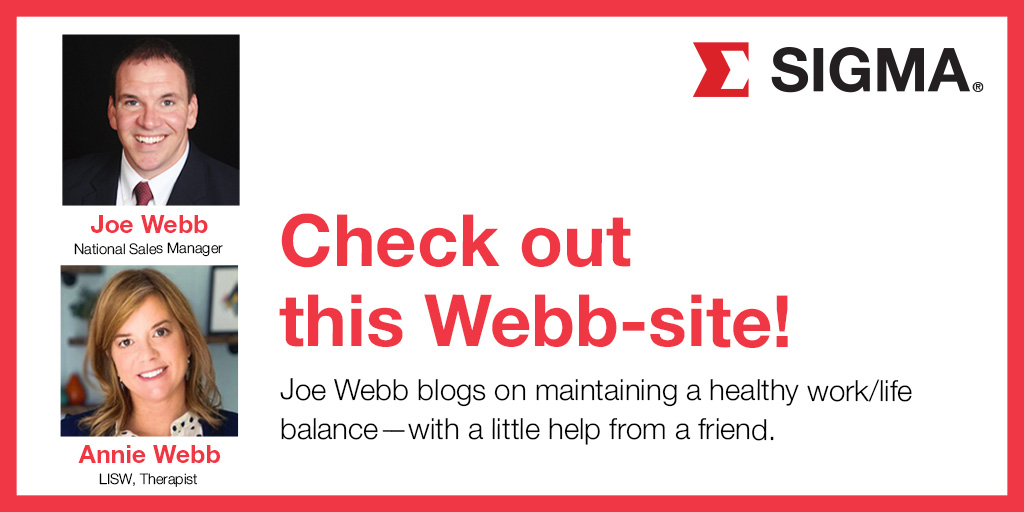Check out this Webb-Site! National Sales Manager Joe Webb blogs on maintaining a healthy work/life balance—with a little help from a friend.
It’s been said many times: 2020 is a year like no other. We have seen massive change in every aspect of life, and the waterworks industry is no exception. Those of us in the sales arena have done a complete 180. Previously, frequent travel, face-to-face meetings, large trade shows, and customer hospitality events comprised much of our work model, but this all changed with various restrictions and lockdowns due to the pandemic. The benefits of the current setup include more time with family and less time spent commuting, traveling, and managing offices. But a big downside is the blurring between work and home, and the resulting imbalance. As sales professionals, particularly here at SIGMA, our mindset is always to put the customer first—and that is a big part of what makes SIGMA great. But the challenge is maintaining a healthy separation to ensure that we don’t neglect our families and ourselves, or reach the point of diminishing returns with our work by overdoing it. Fortunately for me, my wife, Annie Webb, LISW, is a therapist. She helps keep me semi-sane, no small feat, and has offered the following strategies to cultivate a healthy work-life balance in these unprecedented times.
- Create a designated work space that you can check in and out of.
- Establish boundaries; if you don’t someone else will!
- Draft a description of the “Ideal Balance Day”, and recognize that even if you don’t succeed on a given day, know that you can adjust going forward. You may have a really long work day and not see your family for 14 hours, but you can compensate for that tomorrow. Achieving the right balance over a week or a month is the goal.
- Identify your most productive time and optimize it. If you are a morning person, tackle demanding jobs then. Maybe take a break for a walk around the block with your kids or partner during your afternoon lull.
- Small, meaningful, consistent investments of time are more valuable for kids than occasional grand gestures. Take a few minutes throughout the day to help your children make their lunch or a snack, listen to a new song, read a story, or sit with them for a short chat. Frequent, engaging conversations are more significant over time than a one-time extravagant excursion.
- Set a schedule and share it with your coworkers. If you are blocking out time to help with homework or take a parent to the doctor, let your colleagues know you are not available for that time. Trying to multitask reduces your effectiveness at both responsibilities.
- Create and stick to a schedule—even if it changes daily. If possible, display the schedule—a white board works well for this. Kids can check it, and know that Mom is on a zoom meeting til 4, but after that she can help practice my jump shot. Or Dad is delivering groceries to Grandma at 11, but can make us all lunch after that. Anxiety levels are high for everyone these days; the stability of a predictable routine helps allay stress.
- Change the narrative: people can get really negative focusing on what they can’t do, or how work has been impacted. People also feel bad taking time off that is not earned. But if we reposition how we view this time, it can be a great opportunity for growth and development. It is the ideal time to enroll in an online course, pursue a credential or professional development certificate, master a type of software, or reevaluate and pursue career goals.
We can all benefit from a healthy work-life balance, and these challenging times have pushed many of us to our limits. These strategies have helped the Webb household maintain some semblance of order—although with four young kids in and out of school due to the pandemic, an energetic dog, and two parents working from home, “order” is a loose definition.

